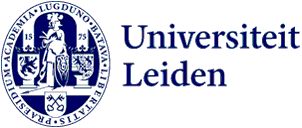
New study helps policymakers combat global warming with negative-emissions technology
Cutting down global emissions of greenhouse gases to combat global warming won’t do the trick alone: we also need negative-emissions technology that can capture carbon dioxide directly out of the air. In the prestigious journal Global Environmental Change, PhD candidate Oscar Rueda and colleagues shed light on this highly neglected solution, and come up with a framework to guide policymakers in reversing climate change.
Warning
Limit global warming to 1.5 degree Celsius. That’s what scientists across the world warn, if we want to prevent catastrophic effects such as droughts, shrinking of the polar icecaps and subsequent floods due to sea-level rise. To do so, we need to quickly bring net global emissions down to zero. However, scientists acknowledge that it is virtually impossible cutting our emissions to zero fast enough, says Oscar Rueda, main author of the study. ‘We urgently need negative-emissions technologies (NETs) to compensate for our emissions that exceed the small carbon budget that we have left. These technologies can remove the main greenhouse gas, carbon dioxide, from the atmosphere.’

Helping policymakers
While it has become clear that NETs are crucial for combatting climate change, there aren’t any concrete plans yet to implement them, Rueda remarks. ‘There are only very detailed plans for reducing our emissions. Negative emission plans remain in the dark, and we would like to change that.’
Still, while NETs may seem the way to go, they’re far from ideal. ‘Some solutions could seriously compromise our food security and biodiversity, while others may turn out unfeasible or prohibitively expensive. That’s why we’ve developed a framework that goes deeper into the feasibility, effectiveness and side-impacts of each NET, and to define the optimal technology mix with realistic outlooks. This framework can help policymakers to deliberately choose the best path to solve the climate emergency.’
Natural solutions
There are two types of NETs: natural and engineered. Let’s quickly dive into the natural NETs first: they are cheap and low-tech, and include soil carbon sequestration – modern farming ways that sequester carbon dioxide – and afforestation. The latter involves planting trees where there were previously none, increasing the Earth’s capacity to convert carbon dioxide in oxygen. While this method is cheap and provides positive effects on biodiversity, it is also very vulnerable, for instance to fires.
‘Natural solutions also have some general downsides, such as that they cannot be scaled up sufficiently due to natural limitations. Also, you need to ensure that a large number of stakeholders is on the same page, which can be quite challenging.’
Engineered solutions
There are also engineered NET solutions, which are more high-tech. An example is direct air capture, in which gigantic vent-like machines suck carbon dioxide straight out of the air, which can then be locked away underground. ‘The problems with these techniques are that most of them are not fully developed yet, and the costs can be very high. Also, some techniques pose severe side effects, such as the so-called BECCS. This technique uses bioenergy crops that extract CO2 from the air as they grow. Afterwards, you burn them for energy and capture the CO2 that is released to lock it underground. This method can be effective, but threatens our food security and the already alarming biodiversity loss.’

Combinations
If every solution has its own downsides, how do you determine which combination is best? Rueda and his colleagues specified a number of scenarios, and made the framework adjustable for policymakers. ‘What the optimal outcome is, depends on which aspects you value most. Are costs the most important factor, or do you want to minimise the side effects as much as possible?We’ve put together multiple portfolios of NET measures that correspond with different priorities. We hope our framework can help policymakers assess and embrace sustainable solutions to reverse climate change.’
Paper
O. Rueda, J.M. Mogollón, A. Tukker, L. Scherer. Negative-emissions technology portfolios to meet the 1.5 °C target, Global Environmental Change, 102238 (18 February 2021)

About Oscar Rueda
After studying Energy Science and Technology at ETH Zurich, Oscar Rueda wanted to make impact with his work. He decided to become a consultant and helped energy majors, companies the likes of Shell, in the energy transition. However, he noticed that those companies were usually competing for the same opportunities. Rueda concluded that he could have a larger impact by doing academic research to advance key neglected solutions. Since 2019, he is a PhD candidate at the Institute of Environmental Sciences, where he investigates carbon dioxide removal technologies. Together with colleague Laura Scherer, he recently launched the outreach platform Sustainability Priorities Research.
Text: Bryce Benda
